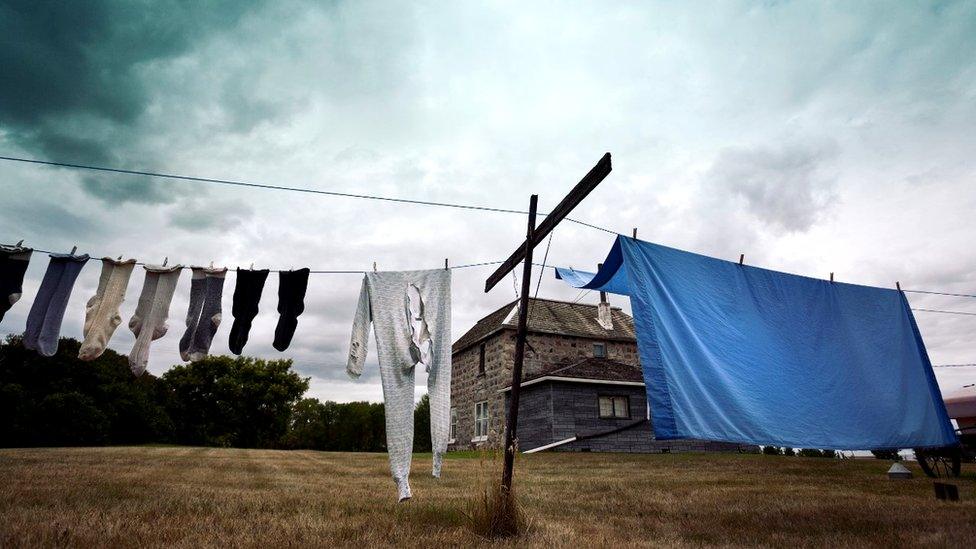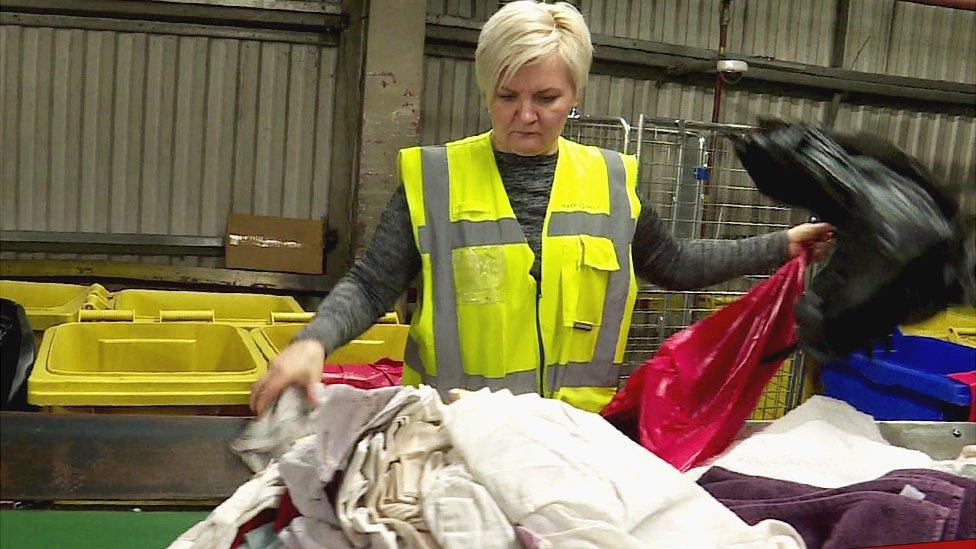MPs to investigate 'fast fashion' impact
- Published
- comments

The rise of cheap, disposable clothes and their impact on the environment will be investigated by MPs.
'Fast fashion', worn a few times before being dumped, can add to landfill, release toxic chemicals in production and plastic fibres in the wash.
The Commons environmental audit committee will look at how the industry could be made more sustainable.
The latest report by campaigners Wrap, external suggests that about 300,000 tonnes of clothing is binned in the UK each year.
That figure from 2015 is 50,000 tonnes less than it was three years earlier but Wrap says the clothing industry still has the fourth largest environmental impact, after housing, transport and food.
Stella McCartney: 'We have to offer solutions'
The problem with 'fast fashion'
Used clothes: Why is demand declining?
The fast fashion phenomenon - cheap clothing with a quick turnover that encourages people to keep buying - has come under fire, external over its environmental impact, including water pollution, the use of toxic chemicals and textile waste.
Committee chairwoman Mary Creagh said: "The way we design, make and discard clothes has a huge environmental impact. Producing clothes requires toxic chemicals and produces climate-changing emissions.
"Every time we put on a wash, thousands of plastic fibres wash down the drain and into the oceans. We don't know where or how to recycle end of life clothing.
"Our inquiry will look at how the fashion industry can remodel itself to be both thriving and sustainable."
The committee is inviting people to comment by September on the environmental impact of the fashion industry, waste, unwanted clothing and working conditions in UK garment factories.
Among the questions it will ask is whether fast fashion is unsustainable, and what can be done to encourage people to buy fewer clothes and think more about how they are disposed of.
- Published6 July 2017

- Published31 January 2018

- Published16 February 2018
